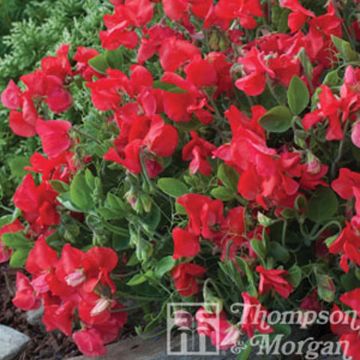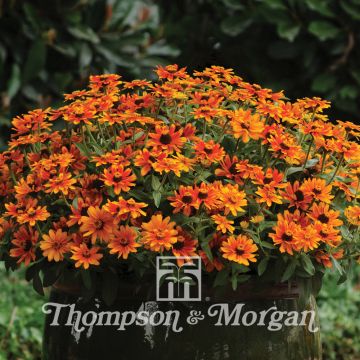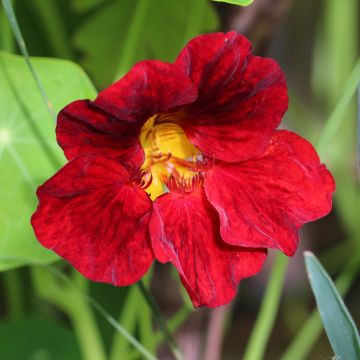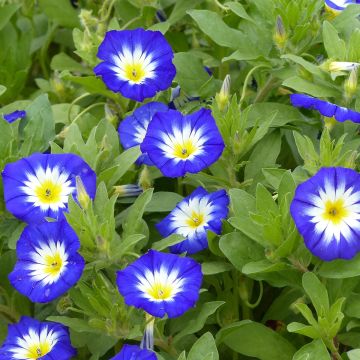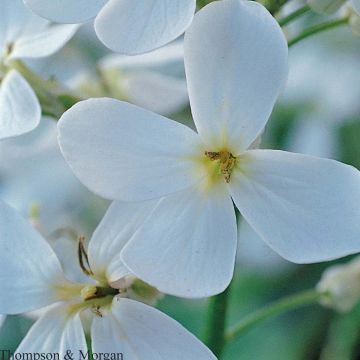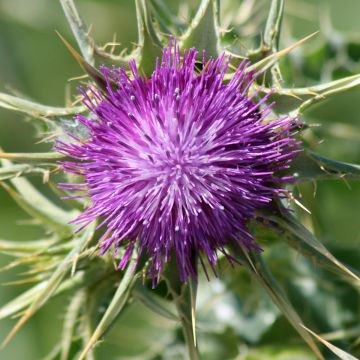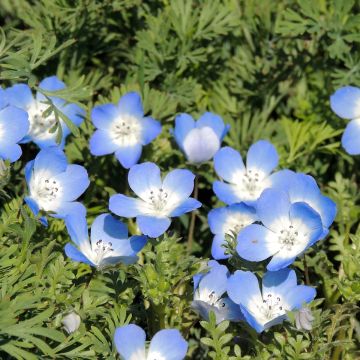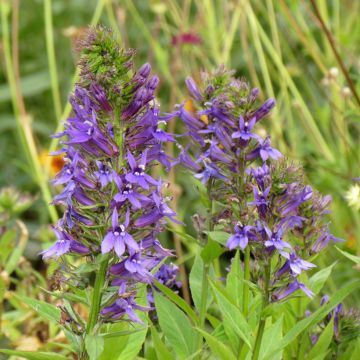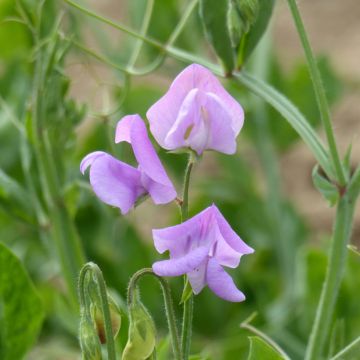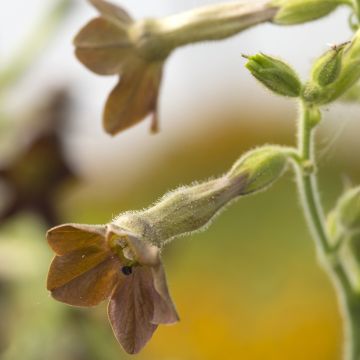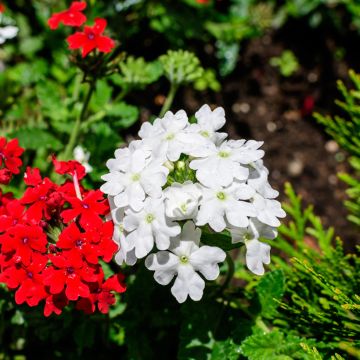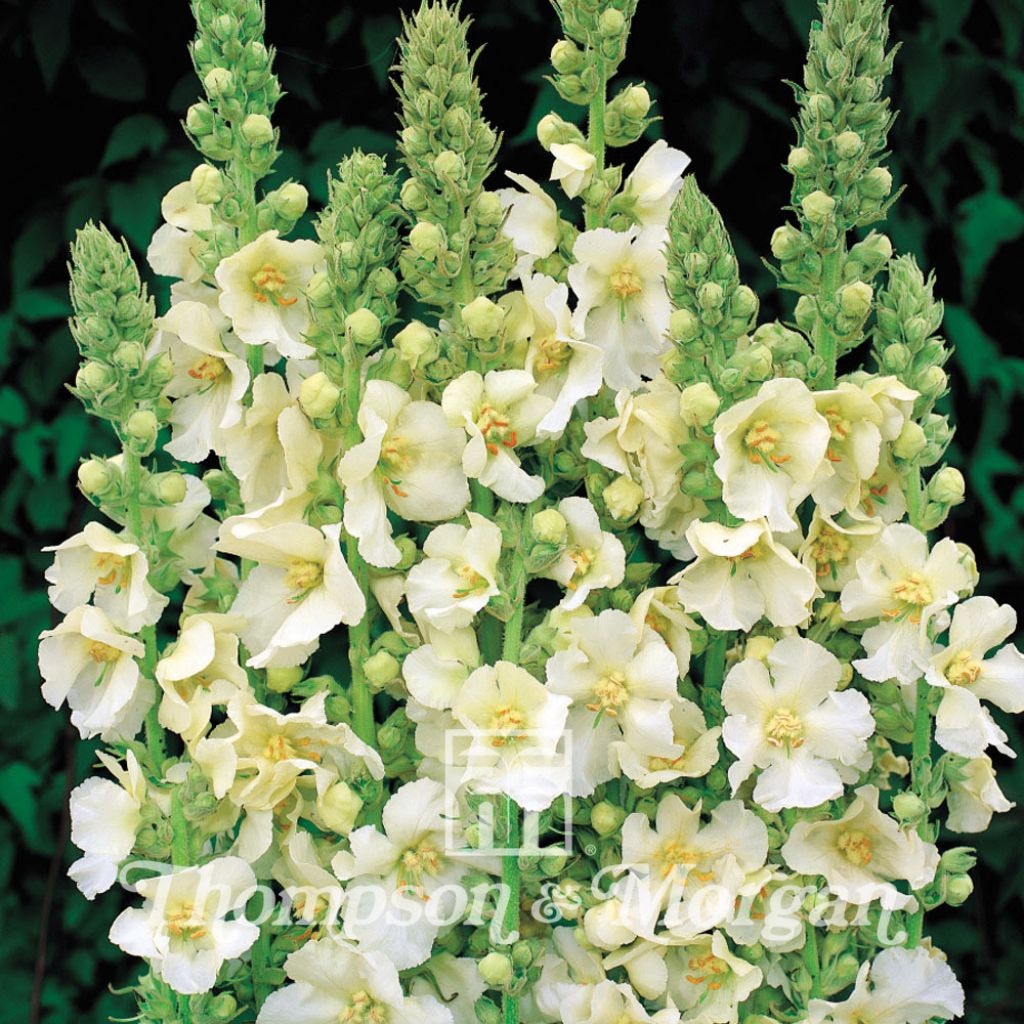

Verbascum Snow Maiden Seeds - Mullein - Mullein
Verbascum Snow Maiden Seeds - Mullein - Mullein
Verbascum x hybrida Snow Maiden
Mullein
The seeds must be sown in April, so I am waiting for spring to sow them. I cannot give an opinion at the moment.
Patricia, 23/09/2022
This plant carries a 6 months recovery warranty
More information
We guarantee the quality of our plants for a full growing cycle, and will replace at our expense any plant that fails to recover under normal climatic and planting conditions.
Seed-only orders are dispatched by sealed envelope. The delivery charge for seed-only orders is €3.90.

Does this plant fit my garden?
Set up your Plantfit profile →
Description
Verbascum x hybrida Snow Maiden, also known as Mullein, is a heavy blooming perennial. Its tall spikes, consisting of many small white flowers with yellow stamens, bloom all summer long, attracting butterflies and other foraging insects. Its velvety silvery foliage blends perfectly with the colours of its flowers, brightening dark areas. A must-have in cloister garden beds, it will allow you to create spectacular, oversize bouquets.
Most Verbascum have a slender, graceful look about them. Their base is composed of a rosette of large, elliptical, grey-green leaves, measuring about 30 cm long, that are downy in the case of the Snow Maiden variety. From this rosette, stems emerge which can grow up to 120 cm high. They end in a long spike, covered with small, 4 cm flowers with a corolla made up of five petals and five stamens, which do not all bloom at the same time, appearing in tiers. Their considerable height means that it sometimes requires staking, especially if the mullein is exposed to wind. It is a summer flower that thrives in well-drained soil and does not tolerate excessively wet soils in winter. On the other hand, it resists drought well and therefore prefers sunny locations, adapts to poor soils while tolerating partial shade. For possible repeat blooms in early autumn, you can cut down the stems whose spikes have wilted.
Mullein Snow Maiden is an incredible charmer. Its small yellow stamens bring hints of cream to the immaculate white shade of its many small flowers. And its velvety foliage softens its appearance even more. All of this allows it to blend perfectly in a silver or white coloured bed, in the company of white yarrow, pearly everlasting and sagebrush. It will also stand out very well against a dark or dark green background, such as provided by a hedge of cedar, laurel or purple beech. You can also let it brighten up a slope or a rather dry, uncultivated area of the garden that you have abandoned, where its light will shine brightest.
Report an error about the product description
Flowering
Foliage
Plant habit
Botanical data
Verbascum
x hybrida
Snow Maiden
Schrophulariaceae
Mullein
Cultivar or hybrid
Other Thompson and Morgan seeds
Planting and care
Verbascum seeds can be sown in seed trays under cover, in spring from March onwards, and even starting in February in milder regions, under cover in a well exposed position, since germination occurs between 20 °C and 30 °C.
Lightly cover the seeds with a fine layer of compost (1 to 2 mm) that you will keep slightly moist and place in the sun (essential for germination). The seeds will emerge after 1 to 3 weeks. When the seedlings are large enough to be moved, transplant them to cups (7/8 cm). When the plant is well developed, you can then plant it out. Choose a well-drained soil and a sunny position.
As with other perennials, you can sow in late spring, early summer and plant out seedlings in the fall.
Sowing period
Intended location
-
, onOrder confirmed
Reply from on Promesse de fleurs
Flower seeds
Haven't found what you were looking for?
Hardiness is the lowest winter temperature a plant can endure without suffering serious damage or even dying. However, hardiness is affected by location (a sheltered area, such as a patio), protection (winter cover) and soil type (hardiness is improved by well-drained soil).

Photo Sharing Terms & Conditions
In order to encourage gardeners to interact and share their experiences, Promesse de fleurs offers various media enabling content to be uploaded onto its Site - in particular via the ‘Photo sharing’ module.
The User agrees to refrain from:
- Posting any content that is illegal, prejudicial, insulting, racist, inciteful to hatred, revisionist, contrary to public decency, that infringes on privacy or on the privacy rights of third parties, in particular the publicity rights of persons and goods, intellectual property rights, or the right to privacy.
- Submitting content on behalf of a third party;
- Impersonate the identity of a third party and/or publish any personal information about a third party;
In general, the User undertakes to refrain from any unethical behaviour.
All Content (in particular text, comments, files, images, photos, videos, creative works, etc.), which may be subject to property or intellectual property rights, image or other private rights, shall remain the property of the User, subject to the limited rights granted by the terms of the licence granted by Promesse de fleurs as stated below. Users are at liberty to publish or not to publish such Content on the Site, notably via the ‘Photo Sharing’ facility, and accept that this Content shall be made public and freely accessible, notably on the Internet.
Users further acknowledge, undertake to have ,and guarantee that they hold all necessary rights and permissions to publish such material on the Site, in particular with regard to the legislation in force pertaining to any privacy, property, intellectual property, image, or contractual rights, or rights of any other nature. By publishing such Content on the Site, Users acknowledge accepting full liability as publishers of the Content within the meaning of the law, and grant Promesse de fleurs, free of charge, an inclusive, worldwide licence for the said Content for the entire duration of its publication, including all reproduction, representation, up/downloading, displaying, performing, transmission, and storage rights.
Users also grant permission for their name to be linked to the Content and accept that this link may not always be made available.
By engaging in posting material, Users consent to their Content becoming automatically accessible on the Internet, in particular on other sites and/or blogs and/or web pages of the Promesse de fleurs site, including in particular social pages and the Promesse de fleurs catalogue.
Users may secure the removal of entrusted content free of charge by issuing a simple request via our contact form.
The flowering period indicated on our website applies to countries and regions located in USDA zone 8 (France, the United Kingdom, Ireland, the Netherlands, etc.)
It will vary according to where you live:
- In zones 9 to 10 (Italy, Spain, Greece, etc.), flowering will occur about 2 to 4 weeks earlier.
- In zones 6 to 7 (Germany, Poland, Slovenia, and lower mountainous regions), flowering will be delayed by 2 to 3 weeks.
- In zone 5 (Central Europe, Scandinavia), blooming will be delayed by 3 to 5 weeks.
In temperate climates, pruning of spring-flowering shrubs (forsythia, spireas, etc.) should be done just after flowering.
Pruning of summer-flowering shrubs (Indian Lilac, Perovskia, etc.) can be done in winter or spring.
In cold regions as well as with frost-sensitive plants, avoid pruning too early when severe frosts may still occur.
The planting period indicated on our website applies to countries and regions located in USDA zone 8 (France, United Kingdom, Ireland, Netherlands).
It will vary according to where you live:
- In Mediterranean zones (Marseille, Madrid, Milan, etc.), autumn and winter are the best planting periods.
- In continental zones (Strasbourg, Munich, Vienna, etc.), delay planting by 2 to 3 weeks in spring and bring it forward by 2 to 4 weeks in autumn.
- In mountainous regions (the Alps, Pyrenees, Carpathians, etc.), it is best to plant in late spring (May-June) or late summer (August-September).
The harvesting period indicated on our website applies to countries and regions in USDA zone 8 (France, England, Ireland, the Netherlands).
In colder areas (Scandinavia, Poland, Austria...) fruit and vegetable harvests are likely to be delayed by 3-4 weeks.
In warmer areas (Italy, Spain, Greece, etc.), harvesting will probably take place earlier, depending on weather conditions.
The sowing periods indicated on our website apply to countries and regions within USDA Zone 8 (France, UK, Ireland, Netherlands).
In colder areas (Scandinavia, Poland, Austria...), delay any outdoor sowing by 3-4 weeks, or sow under glass.
In warmer climes (Italy, Spain, Greece, etc.), bring outdoor sowing forward by a few weeks.

































